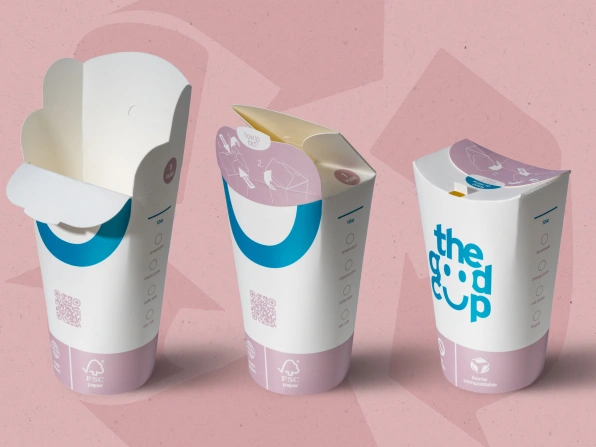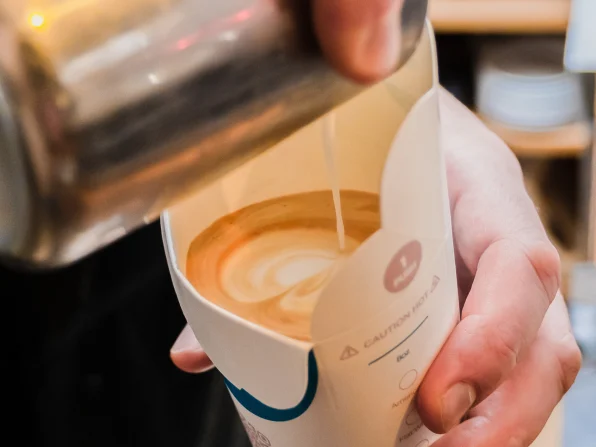
Every year billions of single-use coffee cups are being used and thrown into landfills. Although they may look like they’re made of paper, these single-use cups are lined with a plastic paste called polyethylene. Meanwhile, the lids are entirely made of plastic. Less than 1% of all plastic cups get recycled, mostly because they can’t be.
A good alternative is to always bring your reusable coffee cup or mug to your favorite barista, but we all know that’s not always possible, nor are many people fond of this idea.
Designer Cyril Drouet didn’t like one bit how these stats sounded, so he rolled up his sleeves and went to work, on a quest to make the ultimate sustainable single-use mug — and he may have just done it.
Like Thomas Edison, he burned through more than 1,000 handmade samples over three years until he finally found an iteration that suited his ambitions for a plastic-free, yet still highly practical coffee cup.
This is how the Good Cup, as Drouet calls it, was born.
Can I finally buy guilt-free takeaway coffee?
The new patented cup is made from bio-based home compostable paper and looks a lot like the cardboard container you see used for takeout noodles. The top flap folds and locks into place with a satisfying audible click, removing the need for a plastic lid. The design is spill-proof once the top is secured in place, but if you need to open the cup back up to add sugar, you simply have to push the folded top of the lid to release the locking mechanism.
Typical disposable coffee cups have to be coated with a plastic lining to make them waterproof. The Good Cup achieves the same effect using an alternative called BioPBS, an 100% biodegradable polymer. According to ChoosePlanetA, the packaging company founded by Drouet, this design could reduce storage space, transportation volume, and the carbon footprint associated with coffee cups by up to 40%.

“Most sustainable solutions and plastic alternatives are in general two to three times more costly in the packaging industry,” said Drouet in a statement. “The Good Cup is not only highly sustainable, but it also offers cost savings.
“The impact of the Good Cup’s use is far-reaching and varied; from creating significant savings at the point of production and increasing brand awareness to its most crucial and necessary impact– helping to alleviate the environmental crisis by removing plastic, one lid at a time.”
Getting the industry onboard with this design isn’t easy though. In an interview with Fast Company, Drouet admits that although the Good Cup has been praised, he’s been met with skepticism due to the high cost. Drouet, however, says that the investment in these premium cups can be offset by saving on shipping costs. The cups are initially packed flat and since there are no lids many more units can be shipped in a single box.
Drouet says that the Good Cup is currently being used at Family Mart, a Japanese chain of convenience stores where customers pour their own coffee. Starbucks is also testing different cups that have the same BioPBS coating as the Good Cup, but they’ve yet to share their results.
But even if they might be turned away by the cost, manufacturers and baristas might not have a choice. An increasing number of countries are seeking to ban single-use plastic cutlery and packaging due to the immense strain they put on the environment. For instance, in France, disposable cups are already banned unless they’re compostable, and a similar ban is in place in Western Australia.
One way or another the world is moving away from single-use plastic. We could finally use some good cups — both for us and the environment.


